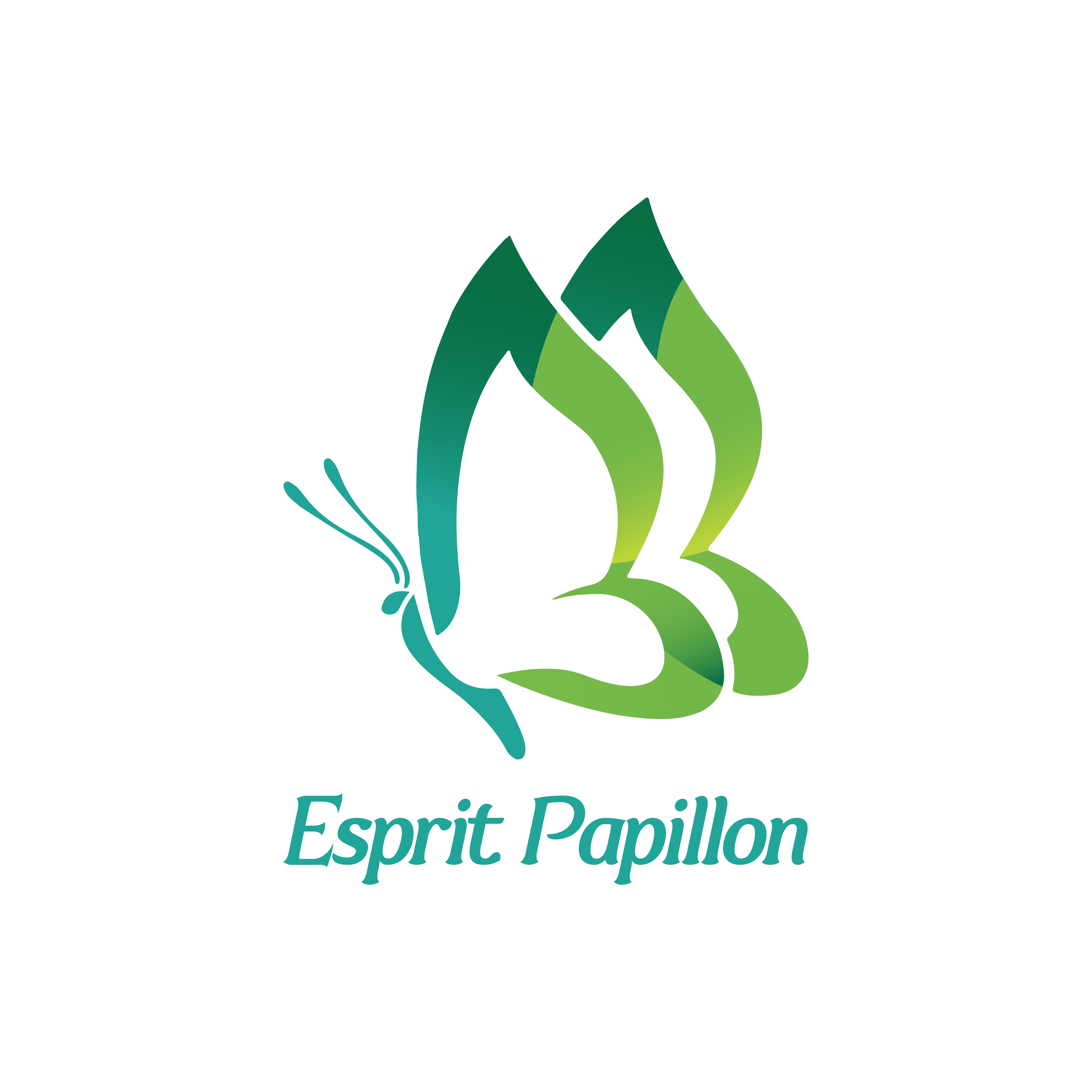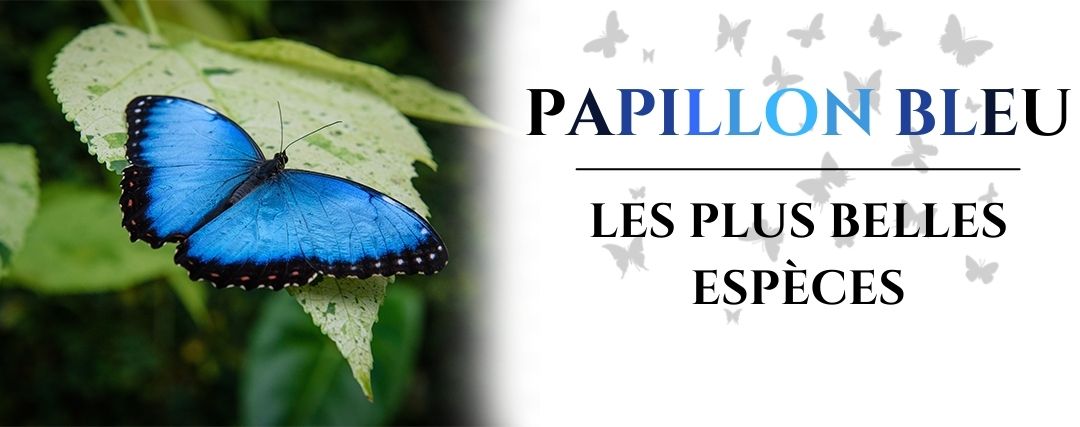A blue butterfly is a stunning example of the marvels that Mother Nature offers us. Due to its beauty, a blue butterfly is often thought to have special meaning and symbolism for those fortunate enough to see one. Observing a blue butterfly is not a common experience, and it is always a memorable moment to have the chance to come across one and be able to contemplate it.
In this article dedicated to blue lepidoptera, you will see a selection of magnificent butterflies with blue wings, curated by us.
The color blue in nature
Blue is the rarest color that can be observed in nature. It is also the most popular. Its rarity is explained by the fact that blue pigments are almost non-existent in their natural state.
For example, the Morpho butterfly has a structural color, not pigment. Its wings appear blue due to their structure and the way its scales trap and reflect light.
By zooming in on the wings of a butterfly that we perceive as blue, we will realize that they are actually gray. It is the light that gives them their color. This phenomenon can also be observed with the oceans, whose water is not blue, yet we perceive it as such.

Photo of the same butterfly (Little Mars Changing) taken a few seconds apart.
What do blue butterflies symbolize?
For many, blue butterflies have spiritual significance. Azure skies and cerulean water evoke a feeling of peace and receptivity. Large expanses of blue are calming, offering spiritual depth and opening us to the flow of life's energy.
Butterflies, in general, have many meanings in different cultures, commonly symbolizing life, love, change, or rebirth. They are also believed to symbolize the essence or soul of a person, whether past, present, or future.
Blue butterflies have many positive associations. Their color is often considered a symbol of joy, peace, or luck.
The most beautiful species of blue butterflies around the world
First, you should know that the vast majority of blue butterflies are males. This is due to sexual dimorphism in butterflies, where males often appear blue, and females brown.
There are a wide variety of blue butterflies around the world. For our selection, we present some species which, thanks to their beauty, have caught our attention.
Here is a list of beautiful blue butterfly species from around the world:
Hypolimnas Alimena

Hypolimnas Alimena is a butterfly of the Nymphalidae family. It has a wingspan ranging from 80 to 90 cm. It can be distinguished by its black color with a broad blue band on each wing, a submarginal black band marked with a row of white dots. The edges of their wings are scalloped. The underside is brown.
This butterfly is found in Australia, New Guinea, Indonesia, and the Solomon Islands. It is commonly seen in tropical north Queensland and is more likely to be active at night.
Rhetus Periander

Rhetus Periander belongs to the Riodinidae family. With a wingspan of up to 60 mm in males, it is recognized by its long tail, the bright blue color, and the small orange spots on its wings.
It is found in most countries of Central and South America, including southern Mexico, Ecuador, Brazil, and Argentina. It is commonly seen in coastal areas, near streams or rivers, or in rainforest habitats.
Polyommatus Icarus

Polyommatus Icarus, also called the Blue Argus, belongs to the Lycaenidae family. It has a wingspan of 28 to 36 mm. The male is a beautiful bright blue with a brownish border and white fringes on the edges of the wings. The female is brown with orange spots and a light blue dust.
It is found in meadows, grasslands, and quarries throughout Ireland and the United Kingdom. It can also be found in North Africa, the Canary Islands, and Europe, notably in all departments of mainland France.
Hamadryas Amphinoma

Hamadryas Amphinome, also called the Red Cracker, belongs to the Nymphalidae family. It has a wingspan of 78 to 86 mm. It features a brilliant metallic blue and black coloring above, a white band on the forewings, and fiery red-orange on the underside of the hindwing. Males and females are similar.
Cracker butterflies are named for the "crunching" sound they make with their wings to protect their territory, audible up to 30 meters away! Unlike many butterflies that feed on nectar, cracker butterflies feed on rotting fruit, animal feces, and sap.
They are found in Mexico, Cuba, Colombia, Bolivia, Peru, Argentina, Brazil, Guyana, and in extreme south Texas.
Morpho Menelaus

Morpho Menelaus belongs to the Nymphalidae family. With a wingspan of approximately 138 mm, it is one of the largest butterflies in the world. Its dorsal fore and hind wings are a bright iridescent blue edged with black. The exterior surface is brownish with numerous ocelli for defending against predators.
This neotropical butterfly is found in Central and South America, notably in the Cerrado in Brazil, as well as in Mexico and Venezuela.
Due to its blue color, Morpho Menelaus is valuable to collectors and was extensively hunted in the 20th century. However, deforestation remains the main threat to its survival.
Butterfly Ulysses

Papilio Ulysses belongs to the Papilionidae family. It has a wingspan of around 140 mm, making it easily visible from afar. The upperside of its wings is an iridescent electric blue, while the underside is more subdued black and brown.
It is found in Australia, particularly in Eastern Queensland.
Battus Philenor

Battus Philenor belongs to the Papilionidae family. It has a wingspan ranging from 60 to 130 mm. It is black with iridescent blue hindwings, sometimes green, with a submarginal band of white dots.
It is found in North and Central America, frequenting warmer and temperate environments such as open grasslands, woods, meadows, and gardens.
Limenitis Arthemis Astyanax

Limenitis Arthemis Astyanax belongs to the Nymphalidae family. It has a wingspan of 57 to 101 mm. Its wings resemble Limenitis Arthemis Arthemis, but without broad white bands. The submarginal area of the forewing sometimes shows a row of red spots. The hindwings are a bright iridescent blue or bluish green.
This species is found in North America, including southwestern Ontario in Canada, and across various states in the US, including Alaska, Florida, and western Texas.
Poritia hewitsoni

Poritia hewitsoni is a small butterfly belonging to the Lycaenidae family. It has a wingspan of 31 to 38 mm. Its wings are an iridescent cyan blue with black bands at the tips of its forewings. The edge of its hindwings is scalloped.
It is found in Thailand, India, Vietnam, Malaysia, and Myanmar.
Panacea procilla

Panacea procilla belongs to the Nymphalidae family. It has a wingspan of 80 to 95 mm. This butterfly displays a range of shades of blue on its wings. Patterns resembling waves amplify its beauty.
This species is found from Panama to the Amazon basin and in Colombia.





